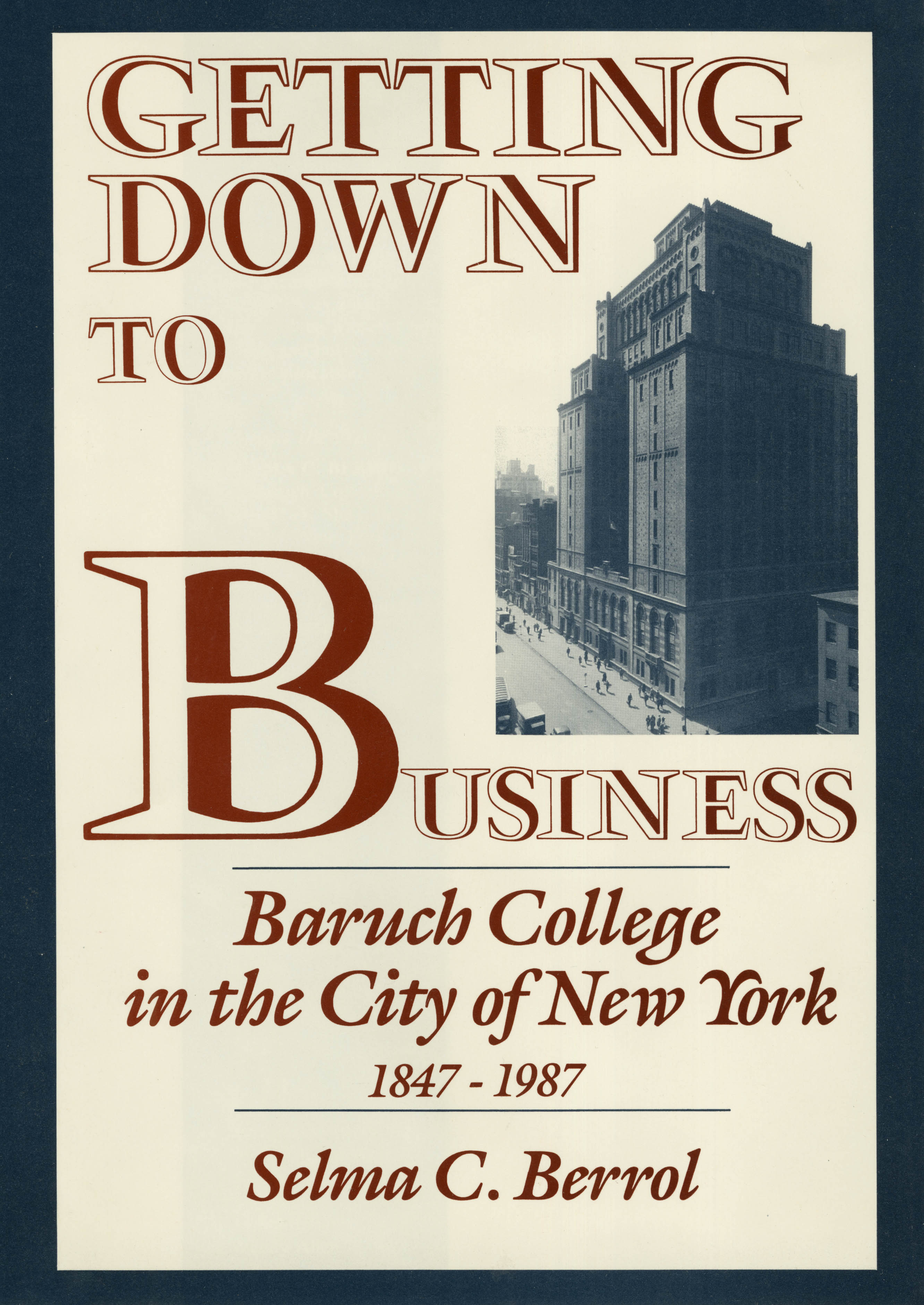History of Baruch College Book and Exhibit
GETTING DOWN TO
BUSINESS
Baruch College in the City of New York, 1847-1987
Selma C. Berrol
©1989 Greenwood Press
INTRODUCTION
This book is a case study of a unique college--unique because for 130 years it charged no tuition to most of its students (and even today is cost-free to many) and because its programs have so closely matched the needs of the extraordinary city of which it is a part. The following chapters will explain how the institution changed as New York did--starting in 1847 as a Free Academy to provide training for the clerks and professionals needed in a growing mercantile city and progressing through several stages of development to emerge as an independent college in 1968.
For most of its history it was known as the School of Business of City College and thus shared the illustrious past of the "proletarian Harvard." Even before it became technically independent, however, there were many differences between the vocationally-oriented institution at 23rd Street and the large and powerful College of Liberal Arts on St. Nicholas Terrace. Programs aside, because "downtown City" was undervalued and treated as a stepchild by the faculty and administration at the main campus, it lacked the resources needed to develop into a healthy and prestigious School of Business. As would be true for a human child, deprivation led to severe emotional and physical problems, which did not begin to disappear until the 1970s.
The anomalous position of a valuable School of Business controlled, to its detriment, by a College of Liberal Arts and Sciences, was recognized long before 1968. Separation and independence had been discussed since the fifties, but the moment of decision finally arrived when the municipal college system, since 1961 known as the City University, and New York City as a whole were in the midst of a crisis. The emergency was precipitated by a long-delayed demand for increased educational opportunities, which would provide a gateway to the middle class for blacks and Hispanics. Precisely because the School of Business in its various incarnations had more than 100 years of experience in "practical education," it was seen as well suited for this task. It was, therefore, separated from City College, renamed Baruch College and assigned the first black senior college president in the City University system. By these acts, the Board of Trustees recognized the value of business education to the minority community and to the economy of New York.
That economy faltered badly in the seventies, but the lean years were followed by a resurgence and with this happy development education for business became enormously attractive. The School of Business and Public Administration at Baruch College became and remained the first choice of more New York City high-school graduates than any other senior college in the municipal system, and has thus more than justified the expectations that led to its creation. Although barely two decades old, it has clearly demonstrated its utility to the New York City business community and to the upwardly mobile men and women who have come to study at its east midtown campus. Just as it had done in previous incarnations, it is filling a real need, and as long as this continues to be the case, it can be expected to flourish.
